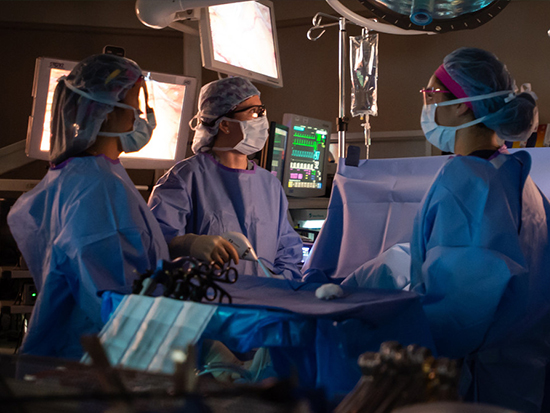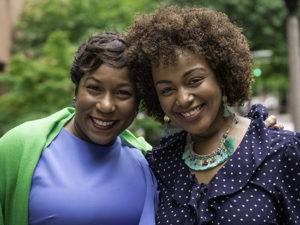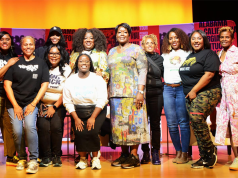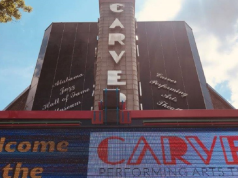
By Adam Pope
UAB News
More than 110,000 people in the United States are on waiting lists to receive lifesaving organs, and nearly 100,000 of those are awaiting a kidney.
Wait times for patients can last for years with no hope in sight. However, there are options other than waiting for a deceased donor. Many family members and friends often step up to the challenge and offer their organs to save a loved one’s life, but the process can seem overwhelming.
That is where the Living Donor Navigator Program at the University of Alabama at Birmingham comes in.
Founded in 2017, the navigator program works with both recipients and donors to identify needs and guide each through the process to transplantation and post-transplant. To help overcome the barriers involved in identifying a potential living donor, each patient identifies a “living donor champion” to oversee the search for a compatible kidney.
The program provides the champion and the patient with training, educational materials and other resources designed to help them be more comfortable with initiating conversations and spreading awareness about living kidney donation. The goal is to improve the chances of locating a donor, given that some patients may be too sick, too busy with treatment and other responsibilities, and/or too withdrawn from social circles to effectively manage the search.
In some cases, the patient simply may not want to ask others to donate such a priceless gift. Choosing a living donor champion helps eliminate the need for patients to serve as their own advocates.
The beginning
For months, Jayme Locke, M.D., director of the UAB Comprehensive Transplant Institute, met with Beverly Berry and Daagye Hendricks, the two patient navigators within the program, to create a UAB model that addressed the comprehensive needs of this specific patient population.
“We were intentional about messaging, allowing the needs of our patient pool to drive desired outcomes,” Hendricks said. “I am still blown away by the overwhelming success of this initiative and grateful for the opportunity to make a tangible difference.”
Hendricks says many of her colleagues see her and Berry all over the UAB campus, but they often have to explain to them what they do.
“We understand,” she said. “This body of work has never existed. It is evolving every day as we continuously improve our standards driven by our patient outcomes.”
The initial goal was to have two transplants from the first set of classes in the first year.
They ended up with more than 20.
“Our goal now is for the UAB Comprehensive Transplant Institute to be first in consideration for renal patients nationwide,” Hendricks said. “This program is one square in the tapestry we call UAB Medicine and the standard of care we provide. We have a hardworking team of dedicated professionals in the CTI who go above and beyond for our patients.”
The work
“Our patient population often has suffered on dialysis for many years,” Hendricks said. “Their loved ones also suffer emotionally and often need support. Beverly and I provide that support for both. We often tell our participants, ‘Stay healthy so we can get you transplanted. Let us teach your champions how to ask out loud.’”
Hendricks says the role of the living donor navigator is important for several reasons. They provide live donor champions the tools necessary to become instant advocates for their loved ones. For the patients, they give them the hope necessary to remain healthy enough to receive their transplants.
“We host a series of four living donor navigator classes for our patients and their families, who we refer to as champions,” Berry said. “The goals of the Living Donor Navigator Program are to decrease the burden experienced by the transplant candidate and to increase awareness of renal failure and the benefits of living donation with the hope of successfully identifying potential living donors.”
Another unique aspect of the Living Donor Navigator Program is assisting potential donors with accessing resources in their communities. For example, the navigators provide potential donors with a list of local health centers that provide free blood pressure screenings, as this is a requirement prior to their scheduled donor evaluation appointment.
“Having access to this resource helps to make the process easier for our donors so they are prepared and supported throughout the donor evaluation at UAB,” said Berry.
Berry, a navigator for more than two years, draws on her previous experience working as a multicultural and community educator for Legacy of Hope — formerly known as the Alabama Organ Center — to help anxious donors throughout the entire process.
“Some people are afraid that, if they donate a kidney, they will be in the hospital for weeks,” Berry said. “Others are afraid they will have to take medications for the rest of their lives to sustain their remaining kidney. That’s just not true. The typical hospital stay for a donor is two to three days, and the only medications donors will have to take are pain medication and a stool softener.”

The joys of navigating
Working in conjunction with the CTI, Hendricks and Berry have played a part in transforming the lives of more than 30 patients.
“The opportunity to work with the UAB CTI team in this life-sustaining body of work is a pleasure,” Hendricks said. “During our 18-month tenure, we have been able to transform the lives of more than 32 patients and professionally train more than 200 ‘champions’ as live donor kidney advocates.”
Hendricks says that, while working with live donor champions, she and Berry organically create a sense of family that permeates every part of the work they do.
“Patients often express their gratitude to Beverly and me for giving them hope and the tools needed to fight for their health,” she said. “They have no idea how much we gain from the experience of serving as navigators.”
She added that the ability to play a part in substantially reducing the average wait times for transplant patients is rewarding work.
“We have had the privilege of creating a new concept in the standard of care we provide at UAB CTI,” she said. “Using creative and unconventional methods, we not only increase awareness about live transplantation but also create a community of supporters and live donors motivated to fight renal failure.”
And while Berry says there are some challenges with organ donation — like combating misinformation — she experiences so much joy when patients express their gratitude for all the help she and Hendricks provide along the way.
“It never gets old,” she said. “When one of our patients tells us ‘I’m getting a kidney!’ those are the days when we know our work is important and makes a difference in the lives of so many.”
Learn more about UAB’s transplant options and how you can become a living donor.




